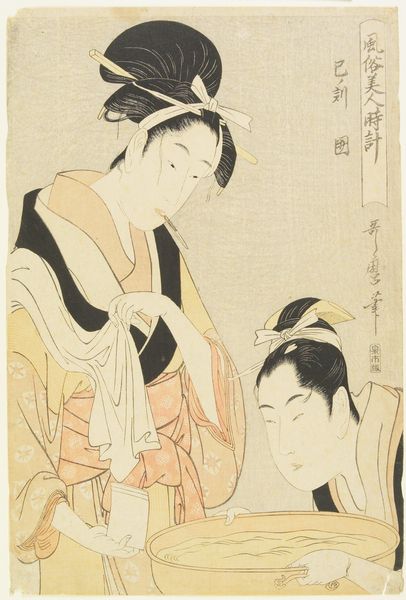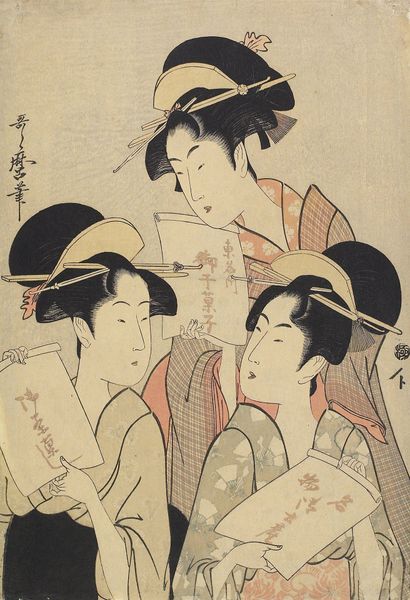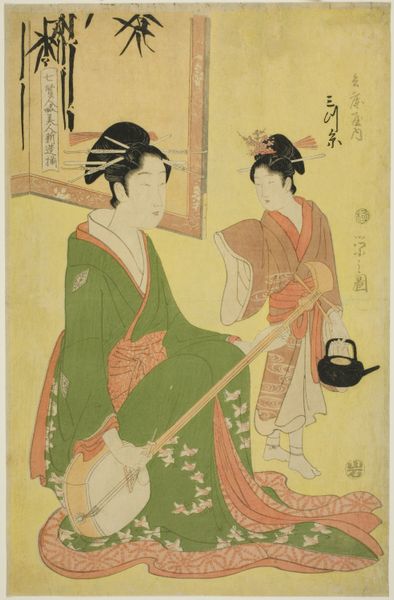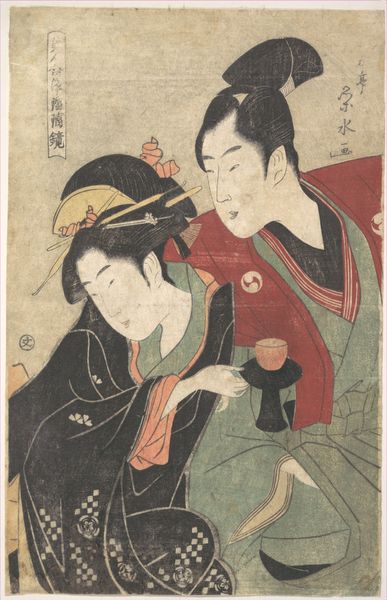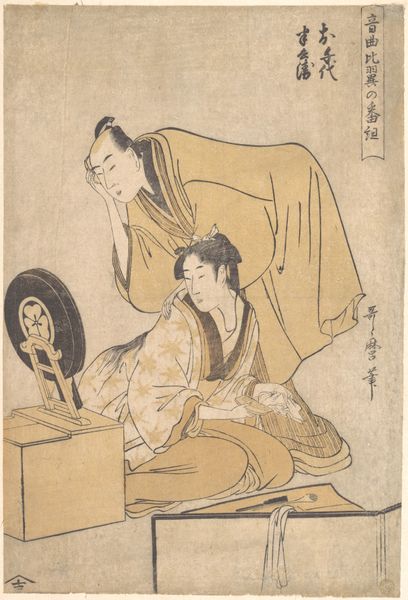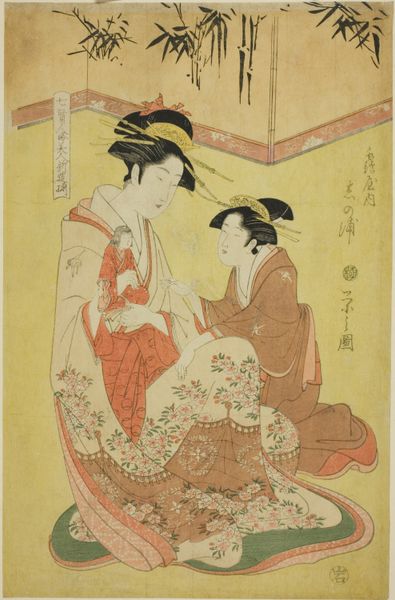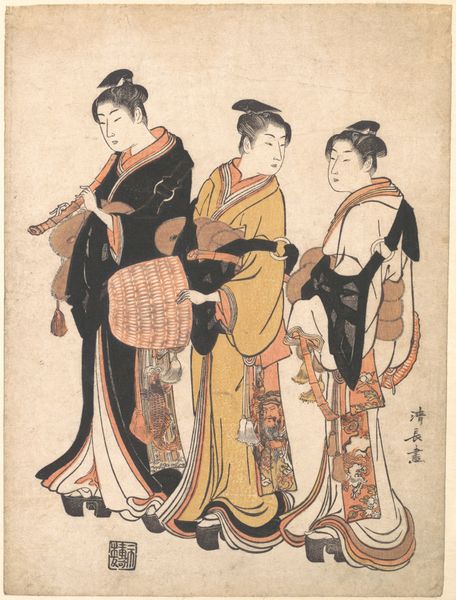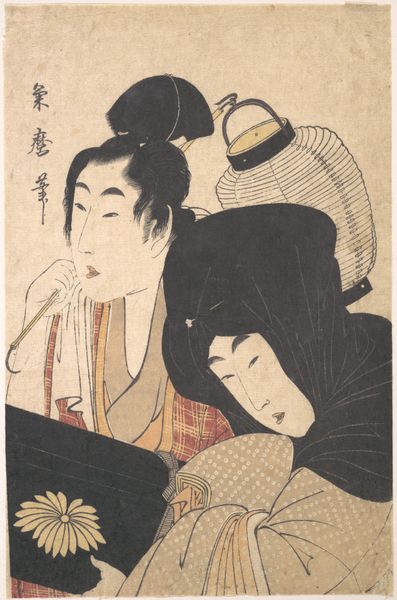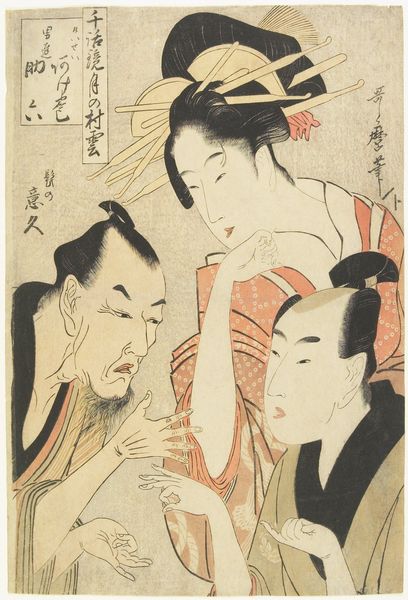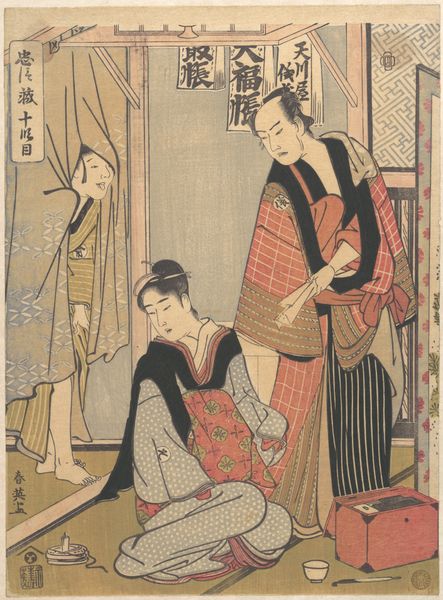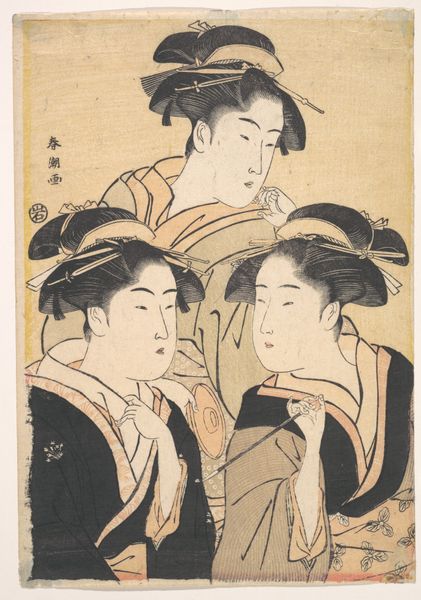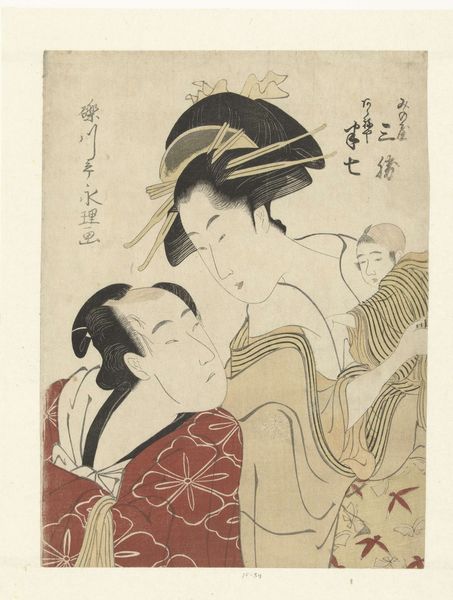
print, ink, woodblock-print
#
portrait
# print
#
asian-art
#
caricature
#
ukiyo-e
#
figuration
#
flat colour
#
ink
#
woodblock-print
#
genre-painting
Dimensions: 15 3/16 × 9 3/4 in. (38.5 × 24.7 cm) (image, sheet, vertical ōban)
Copyright: Public Domain
Curator: Here we have Kitagawa Utamaro's woodblock print, "Hour of the Sheep," created around 1798-1799. It’s currently housed here at the Minneapolis Institute of Art. Editor: The immediate sense is one of serene domesticity, wouldn't you say? The pastel colors, the almost hypnotic downward gazes of the figures, and that fascinating emphasis on line – it's all very calming. Curator: Certainly. The print belongs to the ukiyo-e tradition, which, as its literal translation as “pictures of the floating world” suggests, depicted everyday life, and the leisure activities of courtesans, actors, and other denizens of the urban centers in Japan's Edo period. Prints such as this served as a way to portray idealized femininity within shifting societal norms. Editor: The use of flat colour fields is striking. It contributes to this dreamlike flattening of space. Look how the intricate hairstyles, meticulously rendered, almost become abstract patterns in themselves. Semiotically, those hairstyles signify much about their social status. Curator: Precisely. Hair ornaments and elaborate kimonos would've immediately identified the subjects as women of fashion and likely as courtesans. But look closely; they aren’t engaged in overt entertainment. One reads, the other writes; activities implying they are capable in some intellectual engagement beyond their expected roles. Editor: And there lies the beautiful tension. Their activity is certainly refined, elevated… yet, observe how their features are subtly caricatured, the simplified shapes reducing them to archetypes rather than individual personalities. Does this stylistic choice risk dehumanizing them, rendering them as mere commodities? Curator: I think it humanizes them within the complex socio-economic dynamics of the era. Their fashionable accoutrements reflect their appeal, but their contemplative air suggests self-awareness within a controlled and surveilled society. This allows these women individuality in small doses while recognizing them as part of an interdependent and class conscious demographic of women in society. Editor: A truly fascinating dance of objectification and implied agency. Utamaro compels us to examine beauty, not simply consume it. Curator: Indeed, and perhaps in studying these representations, we are called to examine our own cultural expectations and the complicated dance of power and display that occurs even today.
Comments
No comments
Be the first to comment and join the conversation on the ultimate creative platform.
